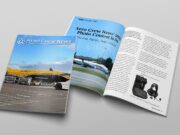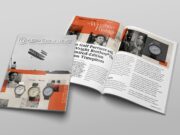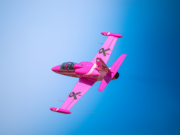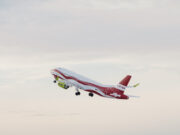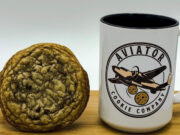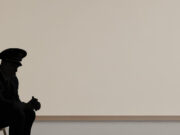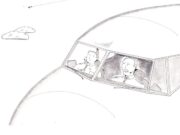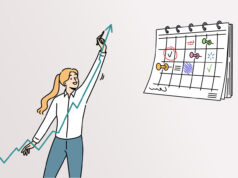
Despite your love for flying, the flight deck can quickly become stressful, demanding peak performance at all times. Dealing with unpredictable weather, crowded skies, and constant responsibility for safety can pile on the pressure. Organizations like NASA have developed evidence-based techniques to help astronauts cope with the challenges of space travel. This article explores the importance of effective stress management and techniques inspired by NASA's training designed to improve mental resilience and performance in stressful situations, inside and outside the flight deck.
Stress is a natural and unavoidable part of life in the aviation profession, stemming from factors such as tight schedules, demanding flight operations, and the responsibility for safety. Left unmanaged, chronic stress can lead to fatigue, burnout, and impaired decision making, all of which can compromise safety and performance.
Recognizing the importance of addressing stress proactively, in the 1960s NASA started researching and implementing stress management for spaceflight during the Mercury and Apollo missions. Since then, NASA has conducted psychological, human factors, biomedical, and simulation research to understand and mitigate stress.
Over the years, the aviation industry has implemented various stress-management tools and resources developed by NASA, such as Crew Resource Management (CRM), Simulation Training, and Peer Support Programs. In addition to these industry-wide initiatives, you can enhance your well-being by implementing personalized stress management techniques and self-care practices.
DIY
Taking proactive steps to manage stress is crucial for maintaining overall well-being and quality of life. Here, we explore NASA's techniques that you can implement yourself to help control stress levels and promote a healthier lifestyle.
- Mindfulness Exercises
Incorporate mindfulness techniques, such as deep breathing or meditation, during pre-flight routines or during downtime, to promote relaxation and focus. In flight, conducting a full-body scan for mindfulness may not be feasible due to the need to focus on flying the aircraft. However, you can still practice a modified body scan to promote relaxation and awareness. Here is how:
- Begin by focusing on your breath.
- Segment your body into smaller areas.
- Bring awareness to each area without moving.
- Release tension with each exhale.
- Use your breath as an anchor.
- Keep it brief and intermittent.
A brief body scan helps promote relaxation and mindfulness without compromising focus on flying.
- Cognitive Restructuring
Cognitive restructuring techniques can be applied by identifying and challenging negative thoughts about flying or performance. Recalling training and past successes counters self-doubt during challenges like turbulent weather. Regular practice of cognitive restructuring techniques can help manage stress, boost confidence, and enhance your overall well-being inside and outside of the demanding aviation environment.
A. Identify Negative Thoughts: Start by becoming aware of negative thoughts or self-doubt before or during flights. These thoughts might include worries about making mistakes, weather conditions, or doubts about your abilities.
B. Challenge Negative Thoughts: Once identified, the next step is to question the validity of these negative thoughts. Ask yourself if there is evidence to support these thoughts or if they are based on assumptions or past experiences. For example, if you are concerned with a potential equipment malfunction, remember the thorough safety checks and protocols.
C. Reframe Negative Thoughts: After challenging negative thoughts, reframe them into more positive and constructive statements. This involves replacing negative thoughts with more realistic and empowering thoughts. For instance, instead of thinking, “I am not sure I can handle this landing in strong crosswinds,” reframe it as “I have practiced crosswind landings many times and have the skills to handle this.”
D. Practice Positive Affirmations: Reinforce positive thoughts by repeating affirmations or mantras that affirm your competence and readiness. These affirmations can be tailored to address specific challenges or concerns you may face during flights.
E. For example, a suitable mantra when facing extreme weather might be: “I trust my training and skills to navigate safely through any storm.” In the case of failing equipment, an empowering mantra could be, “I am trained to handle emergencies calmly and efficiently. I trust my skills to manage this situation and ensure the safety of my crew and passengers.” These mantras reinforce confidence in your abilities to handle challenging situations effectively. - Visualization Exercise
In addition to cognitive restructuring, visualization techniques can be used to rehearse successful flights and scenarios mentally. Research in sports and cognitive psychology backs the effectiveness of visualization, showing it can boost performance and reduce stress. Athletes utilize visualization to improve their performance, manage stress, and achieve their goals by mentally picturing positive outcomes. When flying or training, you can visualize yourself confidently navigating various flight situations, making decisions, and executing maneuvers.
How it works:
A. Find a quiet space: Choose a peaceful environment without distractions.
B. Get into a comfortable position: Sit or lay down comfortably and close your eyes.
C. Deep breathing: Inhale deeply through your nose, hold, and exhale slowly through your mouth.
D. Visualize the scenario: Picture yourself in the flight deck, imagining its sights and sounds.
E. Focus on details: Pay attention to specific aspects like controls and surroundings.
F. Embrace positive outcomes: Envision a successful flight with calm management.
G. Engage all senses: Imagine the feeling of controls, the sound of engines, and sights outside.
H. Practice regularly: Dedicate time for visualization before flights to reduce stress. - Prioritize Self-Care
• Self-care involves intentional actions to prioritize your physical, mental, and emotional well-being, with examples including:
• Make physical activity a priority by incorporating activities like jogging, yoga, or bodyweight workouts, which maintain physical health and is a powerful stress reliever.
• Cultivate social connections, despite being away on trips, to nurture relationships with family, friends, and colleagues through regular video calls, messaging apps, or active participation in social media. These connections provide vital emotional support and combat feelings of isolation while away from home.
Additional suggestions for self-care include:
● Take short breaks throughout the day to refresh your mind and reduce stress.
● At the end of the day, reflect on three things you are grateful for each day.
● Drink water regularly to stay hydrated.
● Dedicate time each day to disconnect from screens and technology. - Monitor Stress Levels
NASA emphasizes the importance of maintaining awareness of stress levels and monitoring mental and emotional states over time. Specific tools and assessments can be used to achieve this.
Biometric Monitoring Devices: Wearable biometric monitoring devices like heart rate monitors or electrodermal activity sensors can track physiological stress indicators. These tools provide real-time insight and help you adjust your behavior accordingly and proactively.
Stress Logs: Keep a stress log or journal to record instances of stress during flights, along with any triggers or contributing factors. Reviewing these logs can help identify patterns and develop targeted strategies for stress management.
Self-Test your Stress
The Perceived Stress Scale (PSS) is a frequently used assessment. Regularly filling out this assessment can help you monitor stress levels, identify patterns or triggers, and take proactive steps to reduce stress.
Perceived Stress Scale Questionnaire
For each question, choose from the following alternatives:
0 – never 1 – almost never 2 – sometimes 3 – fairly often 4 – very often
1. In the last month, how often have you been upset because of something that happened unexpectedly?________
2. In the last month, how often have you felt that you were unable to control the important things in your life?________
3. In the last month, how often have you felt nervous and stressed?________
4. In the last month, how often have you felt confident about your ability to handle your personal problems?________
5. In the last month, how often have you felt that things were going your way?________
6. In the last month, how often have you found that you could not cope with all the things that you had to do?________
7. In the last month, how often have you been able to control irritations in your life?________
8. In the last month, how often have you felt that you were on top of things?________
9. In the last month, how often have you been angered because of things that happened that were outside of your control?________
10. In the last month, how often have you felt difficulties were piling up so high that you could not overcome them?________
Your PSS Score
You can determine your PSS score by following these directions:
First, reverse the scores for questions 4, 5, 7, and 8. On these 4 questions, change the scores like this: 0 = 4, 1 = 3, 2 = 2, 3 = 1, 4 = 0.
• Now add up your scores for each item to get a total. Total score: ___________.
• Individual scores on the PSS can range from 0 to 40, with higher scores indicating higher perceived stress.
► Scores ranging from 0-13 would be considered low stress.
► Scores ranging from 14-26 would be considered moderate stress.
► Scores ranging from 27-40 would be considered high perceived stress.
Final Thoughts
In conclusion, effective stress management is important to ensure optimal performance and safety during flights. Adopting NASA-inspired techniques like cognitive restructuring, visualization, and self-care practices can enhance your resilience and cope with the profession's challenges more effectively. Remember, prioritizing well-being is essential, and seeking additional support when necessary demonstrates strength. If you struggle with stress or find it challenging to implement the mentioned strategies, seek additional support.
Emerald Mental Health can assist you in finding techniques that work for you. Emerald Mental Health specializes in supporting pilots by offering tailored strategies to manage stress effectively via counseling and mental health coaching. Reach out for a free consultation through email at [email protected] or visit www.emeraldmentalhealth.com.
Sources
- Cognitive-Behavioral Strategies for Stress Management: Insights from NASA's Human Factors Research – Aerospace Medicine and Human Performance Journal
- NASA Stress Management Techniques for Astronauts: Lessons for High-Pressure Environments – NASA Technical Reports Server (NTRS)
- New Hampshire Department of Administrative Services. (n.d.). Perceived Stress Scale. Retrieved from https://www.das.nh.gov/wellness/docs/percieved%20stress%20scale.pdf
- The Role of Stress Inoculation Training in Enhancing Resilience and Performance: Lessons from NASA's Human Spaceflight Program – Journal of Applied Psychology


